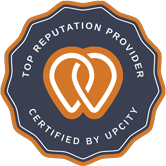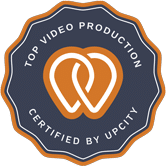 HTTP is the protocol browsers use to connect to websites.
HTTP is the protocol browsers use to connect to websites.
HTTPS is a secure version of that protocol.
Did you know the ‘S’ in HTTPS stands for secure? Communication sent over a secure protocol is encrypted. Although the communication can still be intercepted, the information that is received by the thief is in a format that can’t be read.
HTTPS serves the dual purpose of protecting the privacy and security of visitors to a website while protecting the integrity of the website itself. It’s common to think that HTTPS is important only for financial transactions, but that’s not the case. Intruders can gather information about visitors to a website that doesn’t use HTTPS technology and use that information for nefarious purposes.
Google has been vocally pushing its goal of making the internet more secure through its advocacy of HTTPS encryption adoption.
- In 2014, Google began calling for HTTPS everywhere. The company announced on its blog that it was experimenting with using secure connections in its algorithms responsible for search rankings. At the time, it began to use the presence of HTTPS as a “very lightweight signal” in the rankings. The content of the site was still the primary criteria but the presence, or lack thereof, of HTTPS was factored in, as well.
- In January 2017, Google Chrome 56 started marking pages that collected financial information such as credit cards and/or passwords as “not secure.”
- October 2017 marked the beginning of all HTTP pages used to capture data and all HTTP pages browsed using incognito mode as being marked “not secure.”
- Google plans to release Chrome 68 in July 2018. This version of Chrome is being designed to indicate all HTTP sites as “not secure.”
Its HTTPS encryption on the web report shows up-to-date progress toward Google’s goal of web-wide adoption of HTTPS usage.
Google Chrome is, by far, the most used browser, with 56.31% of the market share as of January 2018. Chrome’s closest competitor, Safari, holds only 14.44% of market share. It behooves websites to design with the understanding that consumers of their site are most likely viewing them using Chrome.
Now that Chrome users will be able to easily see which sites are not secure, psychologically, people may be less likely to enter personal information into sites that don’t use the HTTPS protocol. This can translate into a decrease in lead data capture for those sites.
Although many resources on the internet are designed to help transition a website from HTTP to HTTPS, it is not a quick and easy change to make. If your business relies on an internet presence, it’s not worth the risk of downtime to take this on without professional help. This is an instance of “you don’t know what you don’t know.” Save yourself the headache and lost time by investing in expert assistance.
Now you can get FREE https for your website! Click Here and contact us by submitting the form to find out how, call (847) 220-9541 or send us an email.
SEO has always been a constantly changing system of how to get sites ranked highest. A lot has changed in the SEO world in the last 10 months, and in this article, we’re going to give you a quick overview of Google changes, as well as other more general SEO changes, and how they affect the ranking of sites.
HTTPS/SSL Update – August 6, 2014
Google is now giving sites that use Secure Socket Layer protection a bit of a ranking boost. For now, it’s only a very lightweight ranking signal, and is trumped highly by overall quality of content. However, this is a ranking signal that may gain more ranking weight in the future, so be sure to keep an eye on it.
Panda. 4.0/4.1 Release – September 23, 2014

Google Panda 4.1 – Image Courtesy of SearchMetrics.com
The steady succession of Panda updates rolled out by Google have done a great job of preventing low quality sites from gaining a high rank position. In the Panda 4.0 update, which affects an additional 7.5% of site queries, Google is doing everything in its power to ensure that content quality reigns supreme.
Over the course of the Panda updates, low quality content sites with nothing or very little to offer were systematically eliminated. Also, the Panda 4.0/4.1 updates put an emphasis on the inclusion of mobile optimization and friendliness.
End Of Author Photos/Authorship Details In Google Search – June 28, 2014

When inputting keywords and phrases into the Google search engine, until just recently you’d be inundated with facial snapshots of the documents author. Many people reported being actually “put off” by the facial snapshots, and wanted something done about it.
Google “stepped up to the plate” and eliminated the facial snapshots entirely, so that now only the authors name is shown next to the article hyperlink. This eliminated a lot of “queezy” feelings Google users had about using the Google search engine in particular.
Additionally, through yet another update, any authorship details whatsoever have now been eliminated as well. Now when you do a Google search, you’ll no longer see authorship markup details attached to the SERP links.
Pigeon Update – July 24, 2014
This algorithm update affects local search positions and rankings. Local searches are especially popular with Google, and through the Pigeon update(s), Google comes closer to offering more highly refined, more highly targeted, and more accurate local search experiences.
Distance and location ranking parameters have been improved through this update.
“Top Heavy” Algorithm Update – February 6, 2014
Google is always looking for ways to improve user experience with their search engine. With the “Top Heavy” Algorithm update, sites heavy with ads within the top fold of the page will have their ranking positions penalized.
Also, if advertisements are deemed by the Google algorithm to be “too distracting”, this will also take away from the overall ranking of the site.
Social Media Ranking Signals
Social media has continued to gain popularity as a way to add ranking potential to sites. Through using social media ranking signals such as Facebook and LinkedIn promotion, sites can use the high PR ranking of Facebook to get their sites higher in the SERP’s.
Mobile SEO Popularity
Nearly everyone out there now has a smartphone that’s capable of browsing the web. SEO has thusly started to include mobile optimization strategies as part of the overall makeup of general SEO ranking. This is new for 2014, and throughout the new year of 2015, we’ll be seeing a MAJOR increase in using mobile ranking signals as a way to stay high in the SERPS. Definitely stay tuned to this new change and plan to adopt strategies that implement this new SEO change.
Link Baiting Strategies
This is a highly popular way of gaining links to your site. Through link baiting strategies, a webmaster puts out a high quality piece of content, and thereby uses this as “bait” to get other webmasters to link to it.
The higher quality the content used as “link bait”, the better the chances of gaining more quality links to your site and achieving a higher SERP position.
Long Tail Keyword Dynamics
Optimizing your site in accordance with long tail keyword dynamics is VERY popular. Ranking for a high competition single keyword is exceedingly difficult to rank for. Thusly, webmasters are optimizing their sites for long tail keyword searches that are not only easier to rank for, but also offer more targeted results that result in higher conversion rates too.














